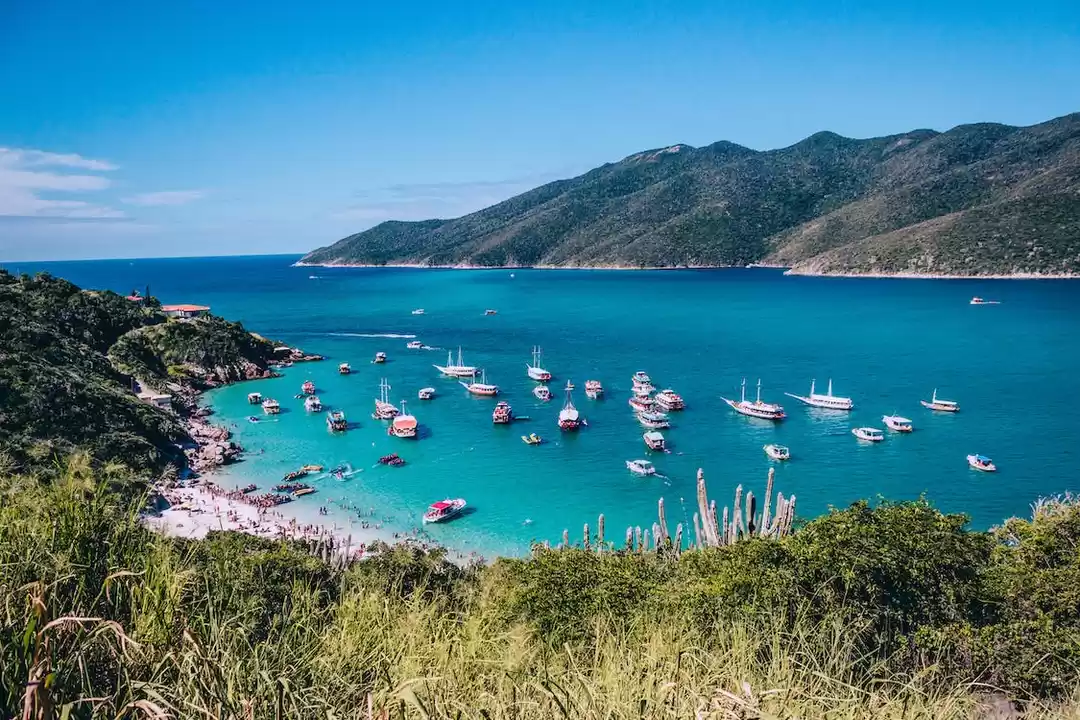Lakes fill us with a sense of tranquility. Especially for me, visiting a huge lake is usually the time when I can just reflect on my own thoughts and be one with the calm waters. But there are lakes which hold gruesome secrets within their tranquil depths, which may be morbid, but are equally fascinating!
So, here's the story of some of the weirdest lakes across the world, which are sure to send a chill down your spine:
1. Lake Natron (Tanzania):
Known for its extremely high alkaline content and temperatures reaching up to 60 degrees Celsius (140 degrees Fahrenheit), Lake Natron has a surreal appearance. The water is red because microorganisms that love salt thrive in this otherwise inhospitable environment. The alkaline waters can preserve the bodies of animals that enter the lake, turning them into eerie calcified statues. it’s often called the “lake of death”, because living things are drawn to this safe-looking lake but once they submerge themselves in the water, they quickly die. However, despite this kind of water, lesser flamingoes use the lake as a breeding ground.

2. Lake Nyos (Cameroon):
Lake Nyos is infamous for a catastrophic event that occurred in 1986. It was previously known to the locals as a large deep blue lake, sitting innocuously in their village. But on Aug. 21, 1986, farmers living near the lake heard rumbling, and a large cloud could be seen, which turned out to be the cloud of death for most people in that area. A large amount of carbon dioxide erupted from the lake, suffocating over 1,700 people and thousands of animals in nearby villages. This incident also left the lake shallower and rust colored. Scientists reasoned that carbon dioxide had been trapped in the bottom of Lake Nyos for a long time, held down by 682 feet (208 meters) of water. On the day of the eruption, something external triggered the release of gas.

3. Horseshoe Lake (California, USA):
This lake sits within a volcanic crater and is known for its "mysterious" carbon dioxide emissions. During 1990 the U.S. Forest Service rangers noticed areas of dead and dying trees between Mammoth Mountain and Horseshoe Lake. After eliminating drought and insect infestations as the causes, scientists found high concentrations of carbon dioxide in the soil. The high levels of gas occasionally displace oxygen, leading to the death of trees and animals in the surrounding area.

4. Lake Karachay (Russia):
Lake Karachay has the dubious honor of being the most polluted place on Earth. Considered one of the most radioactive bodies of water on Earth, Lake Karachay is a result of nuclear waste dumping during the Soviet era. Standing near the lake for just a few minutes could be fatal due to the intense radiation.

5. Lake Roopkund (India):
Also known as the Skeleton Lake, Lake Roopkund is located in the Himalayas and gets its name from the hundreds of human skeletons found at the bottom of the lake. The frigid waters of the lake have managed to preserve these remains for thousands of years. The origin of the skeletons is still a mystery, adding an eerie element to the lake's atmosphere. The trek to this lake remains one of the most popular in India, due to the beautiful vistas around the lake.

6. Lake Michigan Triangle (USA):
While not a specific lake, the Lake Michigan Triangle is an area in the Great Lakes region where numerous unexplained disappearances of ships and aircraft have occurred. This area can easily rival the infamous Bermuda Triangle in terms of unexplained disappearances. The mysterious nature of these incidents has given rise to various theories and legends, including the presence of extraterrestrials.

7. Laguna Colorada (Bolivia):
This red-colored lake is known for its eerie appearance due to its high mineral content and the presence of red algae. The jaw-dropping landscape of Laguna Colorada has been placed alongside the Salar de Uyuni salt flats as ‘Bolivia’s most incredible natural wonder.’ It is also home to large flocks of flamingos, adding to the otherworldly atmosphere.

8. Spotted Lake (Canada):
In winters, this lake looks like any other water body. But, during summer, the lake's water starts evaporating, leaving behind mineral-rich spots of different colors. These spots make it resemble a giant polka-dot pattern, giving it the name "Spotted Lake." This lake has been considered a sacred place for centuries by the indigenous people of the Okanagan Nation, who believed that each of the different circles had different healing and medicinal properties.

9. Jellyfish Lake (Palau):
While jellyfish are a common sight in ocean waters, Jellyfish Lake is one of the rare finds, where these creatures exist in a lake. It is filled with millions of non-stinging jellyfish, creating a surreal swimming experience where visitors can swim among these translucent creatures.

10. Boiling Lake (Dominica):
It is the second largest boiling lake in the world. Located in an area known as 'The Valley of Desolation', this lake is constantly enveloped in vapor due to its extremely high temperature, giving it the appearance of boiling water. The hike to this lake is quite challenging, but rewarding in equal measure.

11. Lake Abraham (Canada):
In the foothills of the Canadian Rockies, Lake Abraham stretches for approximately 33km between the Kootenay Plains and Nordegg, in Alberta’s Bighorn Country. In winters, the temperature around Lake Abraham can drop dangerously low and wind speeds can reach up to 48km/h. But these unfavourable winter months can treat the spectators to a stunning view. The lake freezes, trapping suspended methane bubbles beneath the ice, creating a visually captivating and eerie landscape.

Did these lakes fascinate you as well? Have you been to any of these eerie wonders? Do share your thoughts in the comments or share your own stories on Tripoto.
For more stories follow me on Tripoto and Instagram.

























